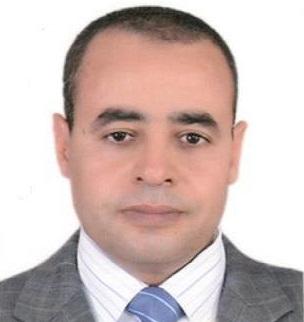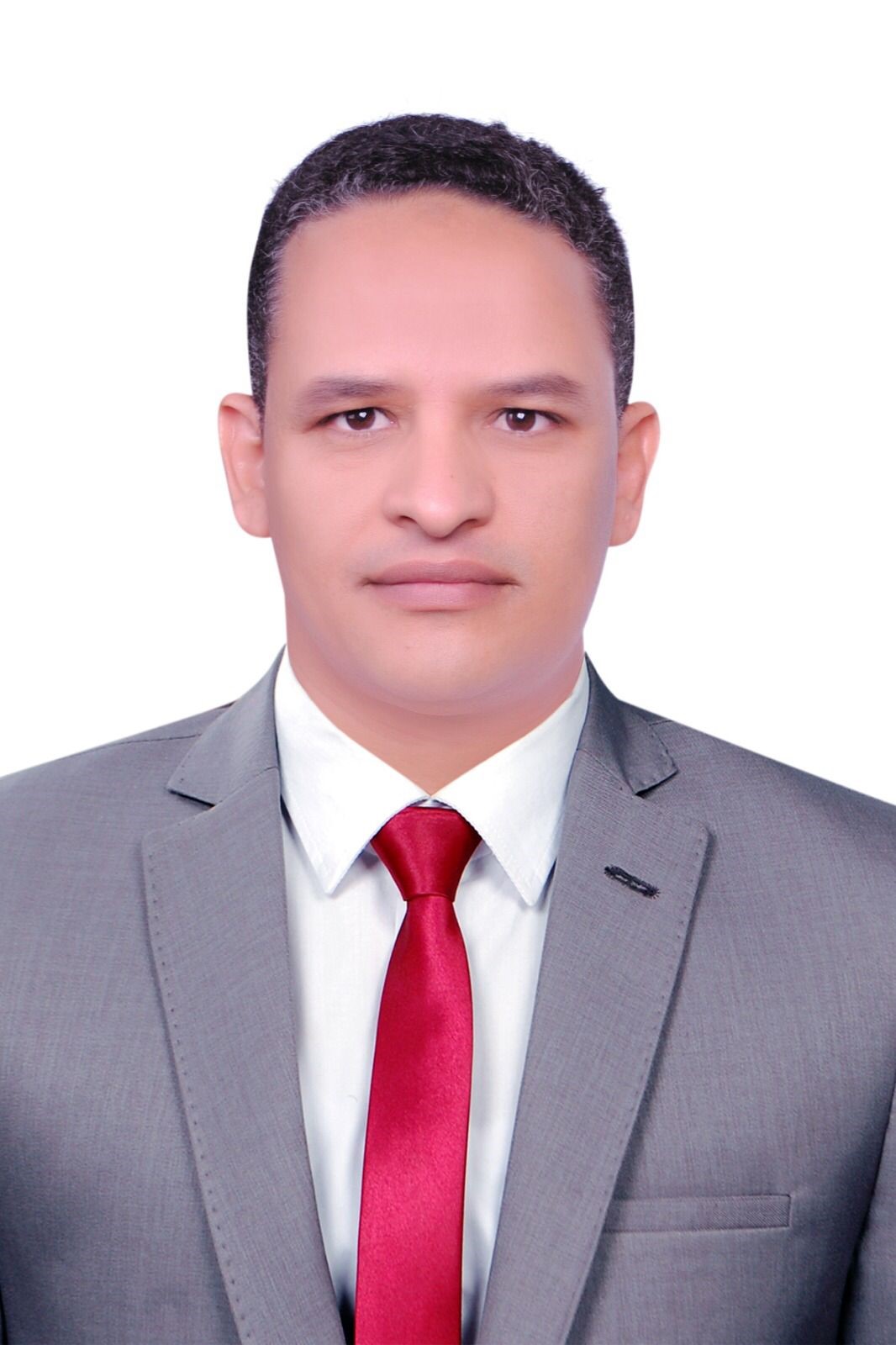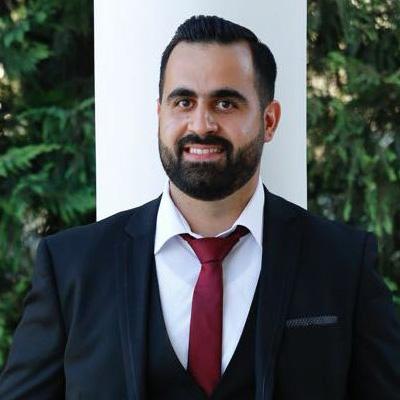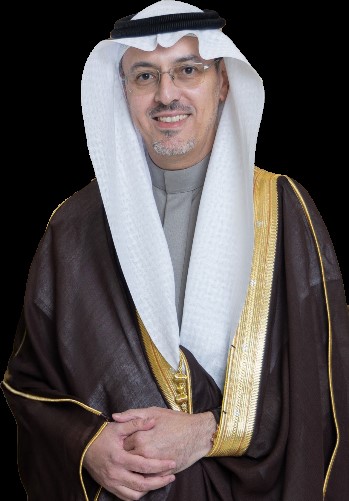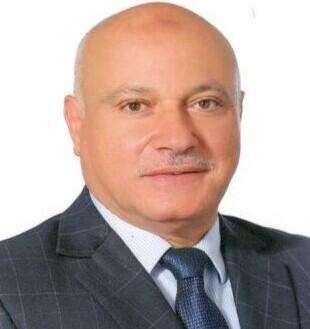
مرحباً بكم في قسم الهندسة الميكانيكية بجامعة فهد بن سلطان !
يسعدنا أن نرحب بكم في قسم الهندسة الميكانيكية في جامعة فهد بن سلطان. يعتبر قسم الهندسة الميكانيكية من الأقسام التي تضم أكبر عدد من الطلاب في حرم الجامعة، ويتميز بتوفير مختبرات متقدمة ومجهزة تجهيزًا جيدًا.
وقد وضع هذا مسؤوليات كبيرة على عاتق جميع أعضاء هيئة التدريس في القسم للتميز في جميع المجالات الاستراتيجية الثلاثة للجامعة: التدريس، البحث، وخدمة المجتمع.
يعد مشروع "نيوم" من المشاريع المستقبلية الطموحة التي ستتضمن مجموعة من التقنيات الذكية وسيكون بمثابة "مختبر حي ومركز للابتكار" كما ذكر المخططون للمشروع. وتتناول هذه المبادرة مجالات الروبوتات، الميكاترونيكس، والرقمنة بشكل شامل، حيث سيتم توفير بيئة مبتكرة ومنتجات صناعية جاهزة للاستخدام. وسيكون هناك حاجة كبيرة لمهندسين سعوديين مؤهلين في هذا المجال.
يحظى القسم بدعم مستمر من الإدارة لتطوير المختبرات، مما يضمن استخدام معدات عالية التقنية لتوفير أفضل تجربة عملية لطلابنا. وفي الآونة الأخيرة، تم تركيب مختبر متطور للروبوتات، الميكاترونيكس، والرقمنة.
التدريس هو النشاط الأكثر أهمية في جامعة فهد بن سلطان ونحن نعمل باستمرار على تحسين برامجنا الدراسية وتحديث محتوياتها وأساليبها. ويساعدنا الاستماع المستمر للتعليقات من أعضاء هيئة التدريس، والطلاب، ولجنة الاستشارات الصناعية، والخريجين في تقييم أنفسنا والعمل على تحسين دائم لبرنامجنا الأكاديمي.
نتيجة لذلك، يعمل قسم الهندسة الميكانيكية على إدخال درجة دراسات عُليا. وضمن هذا السياق، يعتبر قسم الهندسة الميكانيكية في جامعة فهد بن سلطان الطالب هو أغلى منتج لدينا، ومن خلال إنتاج المعرفة الجديدة وإلهام الابتكار، نضع طلابنا على طريق التميز والنجاح المستدام.
نرحب بطلابنا المحليين والدوليين في برنامجنا. إذا كنت ترغب في متابعة دراستك في الهندسة الميكانيكية معنا والانضمام إلى قادة المستقبل في هذه المهنة، فلا تتردد في الاتصال بنا.
د. جمال م. نزال
رئيس قسم الهندسة الميكانيكية
المهمة
- لغرس فهم أساسيات الهندسة الميكانيكية في الطلاب، ودمج النظرية الصفية مع المشاريع العملية والتصميمات العملية.
- لتسليط الضوء على عملية التعلم والتفكير النقدي.
- لتطوير المهارات اللازمة للطلاب ليصبحوا متعلمين مدى الحياة.
- لإضاءة دورهم القيادي في التنمية الإقليمية.
أهداف البرنامج
PEO1. تطبيق أساسيات الهندسة:
سَيُطبّق الخريجون المعرفة العميقة في الهندسة لتحليل وتصميم وابتكار حلول للمشكلات التقنية المعقدة، مع إظهار القيادة والكفاءة التقنية في مجالاتهم.
PEO2. تصميم حلول مستدامة:
سَيُظهر الخريجون مسؤولية أخلاقية والتزامًا مجتمعيًا في ممارستهم الهندسية، من خلال المساهمة في التنمية المستدامة والعمل بفعالية ضمن فرق متنوعة.
PEO3. تعزيز الكفاءة المهنية:
سيتقدم الخريجون في مساراتهم المهنية، محققين مستويات متزايدة من المسؤولية والتأثير من خلال أدوار في التصميم أو الإدارة أو البحث أو ريادة الأعمال.
PEO4. تعزيز التعلم مدى الحياة:
سَيَنخرط الخريجون في التطوير المهني المستمر والتعلم مدى الحياة للتكيف مع التقنيات الناشئة والتحديات العالمية المتغيرة.
MECH BE Program Learning Outcomes
A. Program Learning Outcomes-POs Mapping
|
ABET SLOs |
PIs |
NCAAA PLOs |
POs |
|
1) an ability to identify, formulate, and solve complex engineering problems by applying principles of engineering, science, and mathematics. |
1a) Demonstrate the ability to identify and understand the principles of engineering, science, and mathematics. |
K1) Gain knowledge of mathematics, science, and engineering. |
PO1 |
|
1b) Formulate complex engineering problems by applying the principles of engineering, science, and mathematics. |
K2) Outline engineering problems solutions based on the principles of physical sciences and mathematics. |
PO1 |
|
|
1c) Apply engineering, science, and mathematics principles to develop solutions for complex engineering problems. |
S1) Solve engineering problems by applying principles of mathematics, science, and engineering. |
PO1 |
|
|
2) an ability to apply engineering design to produce solutions that meet specified needs with consideration of public health, safety, and welfare, as well as global, cultural, social, environmental, and economic factors. |
2a) Produce a clear needs statement for a design project, identify constraints, and establish criteria for acceptable and desirable solutions. |
S3) Apply modern techniques and skills to produce solutions in global, economic, environmental, and societal contexts for engineering practice. |
PO2 |
|
2b) Evaluate and analyze the economic aspects of engineering solutions, and use appropriate techniques to assess and manage risks in product or process design. |
|||
|
3) an ability to communicate effectively with a range of audiences. |
3) Communicate effectively with diverse audiences, tailoring the message to the audience's level of understanding and context. |
S5) Communicate effectively with a range of audiences. |
PO3 |
|
4) an ability to recognize ethical and professional responsibilities in engineering situations and make informed judgments, which must consider the impact of engineering solutions in global, economic, environmental, and societal contexts. |
4a) Recognize and uphold ethical and professional responsibilities in engineering situations. |
V1) Uphold ethical and professional responsibilities. |
PO3 |
|
4b) Identify alternative engineering solutions, considering economic, environmental, and societal impacts, and address design conflicts. |
K3) Describe and categorize engineering related contemporary issues. |
PO2 |
|
|
5) an ability to function effectively on a team whose members together provide leadership, create a collaborative and inclusive environment, establish goals, plan tasks, and meet objectives. |
5a) Identify and fulfill roles within a team to ensure success, integrate inputs from all team members, and make decisions based on objective criteria. |
V2) Function and contribute effectively in a team. |
PO3 |
|
5b) Monitor team progress and provide constructive feedback to enhance team performance. |
|||
|
6) an ability to develop and conduct appropriate experimentation, analyze and interpret data, and use engineering judgment to draw conclusions. |
6a) Demonstrate good laboratory practices and instrumentation skills to measure specific quantities and collect required data. |
S2) Develop and conduct appropriate experimentation, analyze and interpret data, and use engineering judgement to draw conclusions. |
PO4 |
|
6b) Use appropriate tools to analyze data, verify and validate experimental results, and account for experimental errors. |
|||
|
7) an ability to acquire and apply new knowledge as needed, using appropriate learning strategies. |
7) Show awareness of the importance of continuous learning and research after graduation, and independently find information relevant to problem-solving. |
S4) Acquire life-long learning skills as needed, using appropriate learning strategies. |
PO4 |
B. PEOs-PIs-NCAAA PLOs Mapping
|
PEOs |
PIs |
NCAAA PLOs |
|
PEO1. Graduates will apply deep engineering knowledge to analyze, design, and innovate solutions for complex technical problems, demonstrating leadership and technical proficiency in their fields. |
1a, 1b, 1c |
K1, K2, S1 |
|
PEO2. Graduates will demonstrate ethical responsibility and societal commitment in their engineering practice, contributing to sustainable development and collaborating effectively in diverse teams. |
(2a, 2b), 4b |
(S3), K3 |
|
PEO3. Graduates will progress in their professional careers, achieving increasing responsibility and impact through roles in design, management, research, or entrepreneurship. |
3, 4a, (5a, 5b) |
S5, V1, (V2) |
|
PEO4. Graduates will engage in continuous professional development and lifelong learning to adapt to emerging technologies and evolving global challenges. |
(6a, 6b), 7 |
(S2), S4 |
المختبرات
تتوفر في قسم الهندسة الميكانيكية مختبرات عالية الجودة مجهزة بأحدث التقنيات تدعم الأنشطة البحثية والتعليمية لبرامج الهندسة الحرارية والتطبيقية والطاقة والقوى والميكاترونيكس والروبوتيات. وتشمل هذه المختبرات مختبر صناعة الصناعة 4.0 عالية التقنية (مختبر الروبوتيات والميكاترونيكس والرقمنة) ويديرها موظفون مؤهلون تأهيلاً عالياً ومدربون جيداً.
يستضيف القسم المختبرات الرئيسية التالية:
- الرسم الهندسي للهندسة الميكانيكية
- مواد الهندسة الميكانيكية
- انتقال الحرارة
- ميكانيكا السوائل
- الأجهزة والقياسات
- عمليات التصنيع
- مختبر الروبوتيات والميكاترونيكس والرقمنة
- أنظمة الديناميكا والتحكم
هيكل المنهج
تم تصميم المنهج الدراسي للامتثال لمتطلبات الاعتماد من ABET. يتضمن المنهج دراسات في العلوم الأساسية والرياضيات وعلوم الهندسة وتصميم الهندسة ومهارات الاتصال والعلوم الإنسانية والاجتماعية. كما أن الخبرة العملية في المختبر والتركيز على التصميم هما عنصران مهمان مدمجان في المنهج الدراسي.
فيما يتعلق بخطط الدراسة، تشمل متطلبات برنامج الهندسة الميكانيكية ما يلي:
- خطة الدراسة 2020:
|
Type of Requirement |
Credit Hours |
|
University Requirements |
30 |
|
College Requirements |
37 |
|
Specialization Requirements |
55 |
|
Specialization Elective |
12 |
|
Total |
134 |
Distribution of Chrs. in terms of the Requirement for the study plan 2020
|
Type of Requirement |
Basic Sciences and Math (CH) |
Humanities (CH) |
Engineering (CH) |
Total Chrs. &% |
|
University Requirements |
6 |
24 |
30 (22.4%) |
|
|
College Requirements |
26 |
3 |
8 |
37 (27.6%) |
|
Specialization Requirements |
55 |
55 (41.0%) |
||
|
Specialization Electives |
12 |
12 (9.0%) |
||
|
Total |
32 (23.9%) |
27 (20.1%) |
75 (56.0%) |
100% |

2. خطة الدراسة 2023:
|
Type of Requirement |
Credit Hours |
|
University Requirements |
37 |
|
College Requirements |
40 |
|
Specialization Requirements |
69 |
|
Specialization Elective |
12 |
|
Total |
158 |
Distribution of Chrs. in terms of the Requirement for the study plan 2023
|
Type of Requirement |
Basic Sciences and Math (CH) |
Humanities (CH) |
Engineering (CH) |
Total Chrs. &% |
|
University Requirements |
9 |
28 |
37 (23.4%) |
|
|
College Requirements |
29 |
11 |
40 (25.3%) |
|
|
Specialization Requirements |
69 |
69 (43.7%) |
||
|
Specialization Electives |
12 |
12 (7.6%) |
||
|
Total |
38 (24.1%) |
28 (17.7%) |
92 (58.2%) |
158 (100%) |
تم تصميم المنهج الدراسي لتمكين الطلاب من الحصول على درجة بكالوريوس في الهندسة بعد إتمام الساعات المعتمدة المطلوبة بنجاح. يسمح العام المشترك الأول مع التخصصات الهندسية الأخرى للطلاب بالتبديل بين التخصصات الهندسية في بداية السنة الثانية من دراستهم.
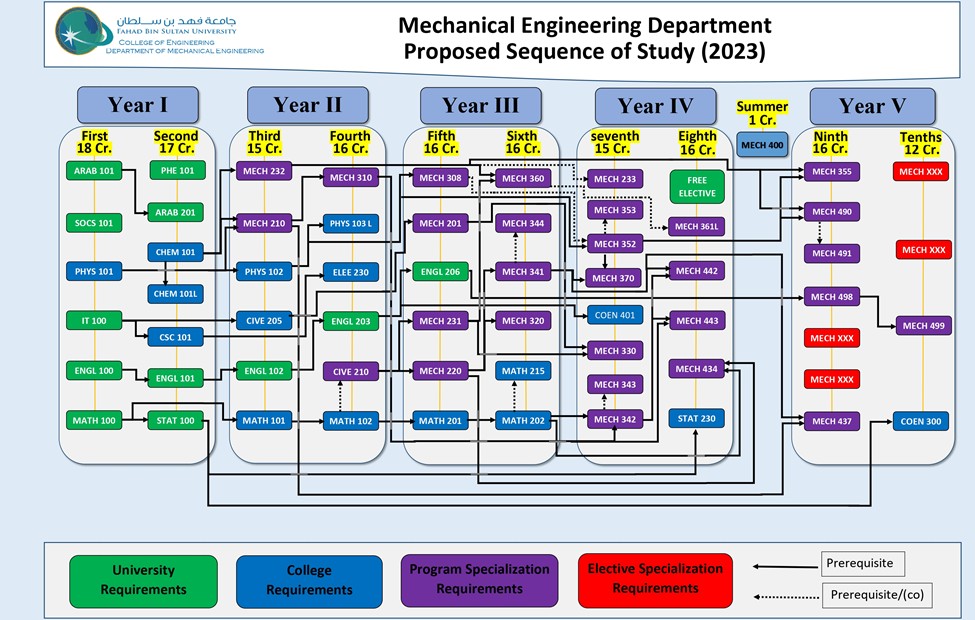
متطلبات التخصص
للتخرج بدرجة بكالوريوس في الهندسة الميكانيكية (BCE)، يجب على الطلاب إتمام 134 ساعة معتمدة بنجاح (حسب خطة الدراسة لعام 2022) أو 158 ساعة معتمدة (حسب خطة الدراسة لعام 2023). توزيع الدورات في خطة الدراسة المقترحة هو كما يلي:
متطلبات الجامعة
تبلغ متطلبات الجامعة للحصول على درجة البكالوريوس في الهندسة 30 ساعة معتمدة وتوزع كما يلي:
• 6 ساعات معتمدة في اللغة العربية: ARAB 101 و ARAB 201؛
• 9 ساعات معتمدة في مهارات الاتصال باللغة الإنجليزية: ENGL 101، ENGL 102، و ENGL 203؛
• 9 ساعات معتمدة في الدراسات الاجتماعية والثقافية: SOCS 101، SOCS 201، و SOCS 202؛
• 3 ساعات معتمدة في الحوسبة للمهندسين: CSC 101؛
• 3 ساعات معتمدة في الرياضيات: MATH 101.
متطلبات الكلية
تبلغ متطلبات كلية الهندسة للحصول على درجة البكالوريوس في الهندسة 41 ساعة معتمدة وتوزع كما يلي:
• 12 ساعة معتمدة في العلوم الأساسية: PHYS 101/ 101L، PHYS 102/ 102L، و CHEM 101/ 101L؛
• 15 ساعة معتمدة في الرياضيات: MATH 102، MATH 201، MATH 202، MATH 215، و STAT 230؛
• 3 ساعات معتمدة في الكتابة التقنية: ENGL 206؛
• 3 ساعات معتمدة في اقتصاديات الهندسة: COEN 300؛
• 3 ساعات معتمدة في أخلاقيات الهندسة: COEN 400؛
• 4 ساعات معتمدة لمشروع التخرج في السنة الأخيرة: MECH 498 و MECH 499؛
• 1 ساعة معتمدة للتدريب الداخلي (MECH 400) بعد إتمام 100 ساعة معتمدة.
متطلبات البرنامج
تبلغ متطلبات البرنامج للحصول على درجة بكالوريوس في الهندسة الميكانيكية 66 ساعة معتمدة وتوزع كما يلي:
• 51 ساعة معتمدة لدورات دراسية:
CIVE 210, ELEE 230; MECH 201 MECH 210 MECH 220 MECH 231
MECH 232 MECH 233 MECH 308 MECH 310 MECH 320 MECH 330
MECH 341 MECH 342 MECH 343 MECH 344 MECH 352 MECH 353
MECH 360 MECH 361L MECH 400 MECH 434 MECH 490 MECH 491
• أربع مواد اختيارية 3 ساعات معتمدة من الهندسة الميكانيكية؛
• مادة اختيارية واحدة 3 ساعات معتمدة.
مشروع التخرج
كجزء من السنة الرابعة ، يُطلب من الطلاب تنفيذ مشروع وتقديم تقرير فني. يعد هذا المشروع عملاً جوهريًا سيتطلب نشاطًا إبداعيًا وتفكيرًا أصليًا. يتم الإشراف على الطلاب في مجموعات ، عادة ثلاثة لكل مجموعة ، أثناء العمل في مشروع يمثل أربع ساعات معتمدة ، ويمتد على مدار عام دراسي كامل. يهدف المشروع إلى تزويد الطلاب بتجربة انتقالية من العالم الأكاديمي إلى العالم المهني. إنه مصمم ليكون بمثابة منصة يشارك فيها طلاب ME في فرق في تجربة تصميم ذات مغزى تتطلب حلًا لمشاريع التصميم الهندسي. أهداف مشروع السنة النهائية هي:
- للسماح للطلاب بإظهار مجموعة واسعة من المهارات المكتسبة في كلية الهندسة خلال فترة دراستهم من خلال مطالبتهم بتقديم منتج اجتاز التصميم والتحليل والاختبار والتقييم
- لتشجيع البحث متعدد التخصصات من خلال التكامل الذي تم تعلمه في عدد من الدورات.
- للسماح للطلاب بتطوير مهارات حل المشكلات والتحليل والتوليف والتقييم.
- لتشجيع العمل الجماعي.
- لتحسين مهارات الاتصال لدى الطلاب من خلال مطالبتهم بإعداد تقرير احترافي وملصق احترافي وتقديم عرض تقديمي شفهي
المشروع مهم لعدة أسباب:
- إنه أكبر عمل تصميم منفرد يقوم به الطالب خلال برنامج درجة البكالوريوس.
- يسمح للطلاب بالتخصص في موضوع يستمتعون به.
- إنه العمل الذي من المرجح أن يسأل أرباب العمل المحتملين الطلاب عنه أثناء المقابلة.
- يسمح للطلاب بإظهار مجموعة واسعة من المهارات المكتسبة منذ السنة الأولى.
- يجب على الطلاب إثبات هذه المهارات من خلال تقديم منتج اجتاز التصميم والتحليل والتصنيع والاختبار والتقييم
فرص العمل
يعمل قسم الهندسة الميكانيكية على تزويد طلابه بالمهارات والمعرفة الحديثة التي تمكنهم من متابعة مسارات مهنية ناجحة في مجال الهندسة، وتحقيق تأثيرات كبيرة داخل منطقة تبوك وعبر منطقة الخليج بشكل عام. مع أخذ هذه الأهداف في الاعتبار، تم تصميم برنامج الهندسة الميكانيكية على أساس تعزيز أفضل الممارسات والمهارات المعاصرة بما يتماشى مع الفرص الوظيفية المتاحة للمهندسين الميكانيكيين في تبوك ومنطقة الخليج.
النظم الميكانيكية جزء من حياتنا اليومية، سواء كان ذلك في السيارة التي نقودها، أو الطائرة التي نركبها، أو المصعد الذي نستخدمه، أو المنتجات التي نتعامل معها. المجالات التي تنتمي إلى الهندسة الميكانيكية عديدة وتغطي طيفًا واسعًا جدًا. هذا يعني أن الطالب في مجال الهندسة الميكانيكية أمام برنامج دراسي مليء بالتحديات، ولكنه يعني أيضًا أن الفرص المتاحة للمهندسين الميكانيكيين واسعة ومتنوعة.
يعمل المهندسون الميكانيكيون في التخطيط والتصميم والبناء والتنفيذ وتشغيل النظم الميكانيكية والنظم ذات الصلة في مجموعة متنوعة من المواقف. تعتمد العديد من التخصصات الأخرى مثل البيوميكانيكا، وحماية البيئة، والعديد من المجالات الحيوية والناشئة على خبرة المهندسين الميكانيكيين. يعمل المهندسون الميكانيكيون في مجالات متعددة مثل البحث والتطوير، والتصميم، والعمليات، والصيانة، وضمان الجودة، والهندسة الحيوية، والنقل (خصوصًا السيارات والطيران)، والطاقة، والتدفئة، والتهوية، والتبريد، وأنظمة التكييف، وأنظمة الحياة البيئية، والصناعات الكيميائية، وإنتاج المواد الغذائية، ومعالجة المواد، والتصنيع الآلي، والبناء، والآلات الثقيلة والدقيقة، والروبوتات، والميكاترونيكس. وبالتالي، فإن طيف الفرص المهنية مفتوح أمامهم. وبسبب الطبيعة الواسعة جدًا لتخصصهم، فإن المهندسين الميكانيكيين غالبًا ما يكونون في طلب عالٍ. إلى جانب العمل في القطاع الخاص، قد يعمل بعض الخريجين في الحكومة أو المنظمات غير الحكومية، بينما قد يختار آخرون متابعة الدراسات العليا أو بدء أعمالهم الخاصة.
الشراكة مع نيوم
وقّعت نيوم، مشاريع السعودية الطموحة في مجال "المدن الذكية والتقنيات المتقدمة"، شراكة مع جامعة فهد بن سلطان لتقديم برنامج منح داخلية للطلبة الراغبين في دراسة البكالوريوس. وسيُتاح للمرشحين المختارين الالتحاق بمسار متخصص في هندسة الميكاترونكس والروبوتات، مع فرص مستقبلية للمشاركة في مشاريع نيوم الكبرى وشركاتها التشغيلية بعد التخرج. وتهدف هذه الشراكة إلى تطوير الكفاءات الوطنية، وتوفير فرص عمل، وتمكين الطلاب والطالبات من الإسهام في دفع عجلة الابتكار في المنطقة.
وتُعد نيوم مختبراً حياً للتقنيات المتطورة، حيث تُعطي الأولوية لتخصصات الروبوتات، والميكاترونكس، والتحول الرقمي، مما يتطلب وجود مهندسين سعوديين مؤهلين لدعم بنيتها التحتية المتقدمة. وفي هذا الإطار، يقدّم قسم الهندسة الميكانيكية مساراً مخصصاً في هندسة الميكاترونكس والروبوتات، يزوّد الطلاب بالمعرفة والمهارات اللازمة لتلبية احتياجات صناعات نيوم الذكية ومراكزها الابتكارية. وتؤكد هذه الشراكة التزام الطرفين بالمساهمة في مستقبل السعودية التقني، وترسيخ مكانة نيوم كقائد عالمي في التنمية الحضرية المستدامة والآلية.
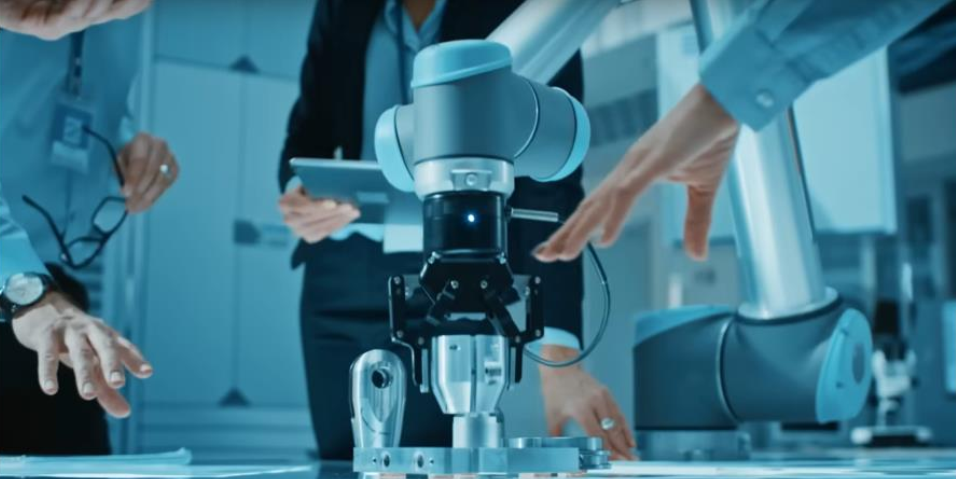
تدريب عملي
يُطلب من جميع طلاب الهندسة إكمال فترة تدريب مدتها ساعة معتمدة من 8 إلى 12 أسبوعًا. يستلزم مطلب التخرج هذا أن يكتسب كل طالب كبير (طالب أكمل حوالي 80٪ من إجمالي متطلبات الائتمان) خبرة في التدريب العملي خلال الفصل الصيفي قبل التخرج ، أو في فصل التخرج ، إما مع شركة أو مؤسسة أكاديمية أثناء مشاركته في تجربة عملية.
إحصائيات البرنامج
|
Bachelor of Mechanical Engineering (BEE) |
|||||||||||||
|
Academic Year |
Enrollment Status |
Enrollment Year |
Total Undergrad |
Total Grad |
Degrees Awarded |
||||||||
|
1st |
2nd |
3rd |
4th |
5th |
Associates |
Bachelors |
Masters |
Doctorates |
|||||
|
Current Year |
2025-2026 |
FT |
68 |
55 |
70 |
46 |
0 |
239 |
|
|
|
|
|
|
Current Year |
2025-2026 |
PT |
|
|
|
|
|
|
|
|
|
|
|
|
1 |
2024-2025 |
FT |
70 |
50 |
62 |
48 |
0 |
230 |
|
|
67 |
|
|
|
1 |
2024-2025 |
PT |
|
|
|
|
|
|
|
|
|
|
|
|
2 |
2023-2024 |
FT |
63 |
52 |
61 |
19 |
0 |
195 |
|
|
36 |
|
|
|
2 |
2023-2024 |
PT |
|
|
|
|
|
|
|
|
|
|
|
|
3 |
2022-2023 |
FT |
10 |
66 |
44 |
29 |
18 |
167 |
|
|
38 |
|
|
|
3 |
2022-2023 |
PT |
|
|
|
|
|
|
|
|
|
|
|
|
4 |
2021-2022 |
FT |
5 |
38 |
36 |
33 |
14 |
126 |
|
|
38 |
|
|
|
4 |
2021-2022 |
PT |
|
|
|
|
|
|
|
|
|
|
|
|
5 |
2020-2021 |
FT |
5 |
23 |
25 |
34 |
16 |
103 |
|
|
40 |
|
|
|
5 |
2020-2021 |
PT |
|
||||||||||


